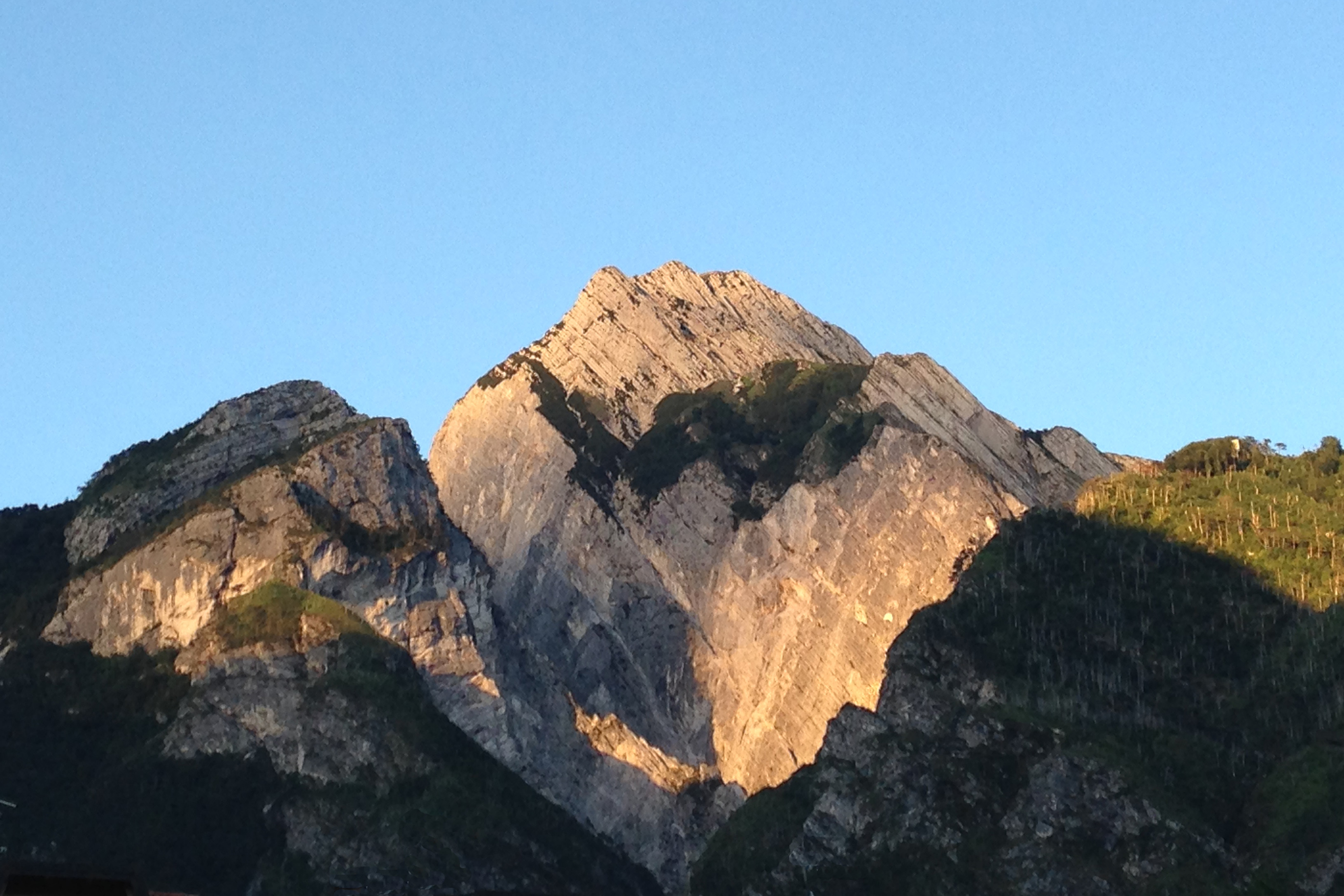The rock layers that form Mount Amariana deposited in a marine environment, during the Triassic. Subsequently, with the Alpine orogeny, these layers have deformed, creating a huge fold that affects the entire relief. Today the fold is more difficult to decipher with the naked eye, because of successive faults: vertical fractures that have dismantled it, transposing the sections, like in a puzzle whose pieces do not fit perfectly anymore and yet make possible to understand the whole picture. The most evident fault supplies the alluvial cone material through the steep gorge of Rio Citate.
The Rivoli Bianchi cone is made of material that has accumulated over the last 18,000 years, after the disappearance of the glacial tongues that covered the area. Its surface is over 2 km2, with a maximum difference in level of about 200 m.

